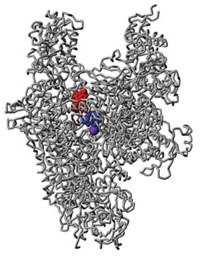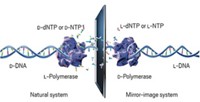Advertisement
Grab your lab coat. Let's get started
Welcome!
Welcome!
Create an account below to get 6 C&EN articles per month, receive newsletters and more - all free.
It seems this is your first time logging in online. Please enter the following information to continue.
As an ACS member you automatically get access to this site. All we need is few more details to create your reading experience.
Not you? Sign in with a different account.
Not you? Sign in with a different account.
ERROR 1
ERROR 1
ERROR 2
ERROR 2
ERROR 2
ERROR 2
ERROR 2
Password and Confirm password must match.
If you have an ACS member number, please enter it here so we can link this account to your membership. (optional)
ERROR 2
ACS values your privacy. By submitting your information, you are gaining access to C&EN and subscribing to our weekly newsletter. We use the information you provide to make your reading experience better, and we will never sell your data to third party members.
Infectious disease
Covid-19
How remdesivir blocks SARS-CoV-2’s polymerase
Researchers use cryo-EM to show how the drug stops RNA replication
by Laura Howes
May 9, 2020
| A version of this story appeared in
Volume 98, Issue 18

Researchers have used cryo-electron microscopy (cryo-EM) to show how remdesivir, an antiviral that’s shown promise against the novel coronavirus, SARS-CoV-2, binds the viral polymerase (Science 2020, DOI: 10.1126/science.abc1560). Remdesivir is an antiviral designed to act as a prodrug of the nucleotide adenosine. After the drug diffuses into cells, enzymes convert remdesivir to the monophosphate before it disrupts production of new strands of the virus’s RNA. The group, led by researchers at the Chinese Academy of Sciences, Zhejiang University, and Tsinghua University, purified SARS-CoV-2’s RNA-dependent RNA polymerase and showed in vitro that remdesivir inhibits the enzyme from copying RNA. Then the team mixed the enzyme with short lengths of RNA and remdesivir in its monophosphate form (RMP) and analyzed the resulting complex via cryo-EM at 2.5 Å resolution. The imaging study confirms that remdesivir latches onto the primer RNA, stopping the polymerase from lengthening the chain using the template strand as a guide. This shuts down viral reproduction.
Support nonprofit science journalism
C&EN has made this story and all of its coverage of the coronavirus epidemic freely available during the outbreak to keep the public informed. To support us:
Donate Join Subscribe





Join the conversation
Contact the reporter
Submit a Letter to the Editor for publication
Engage with us on Twitter